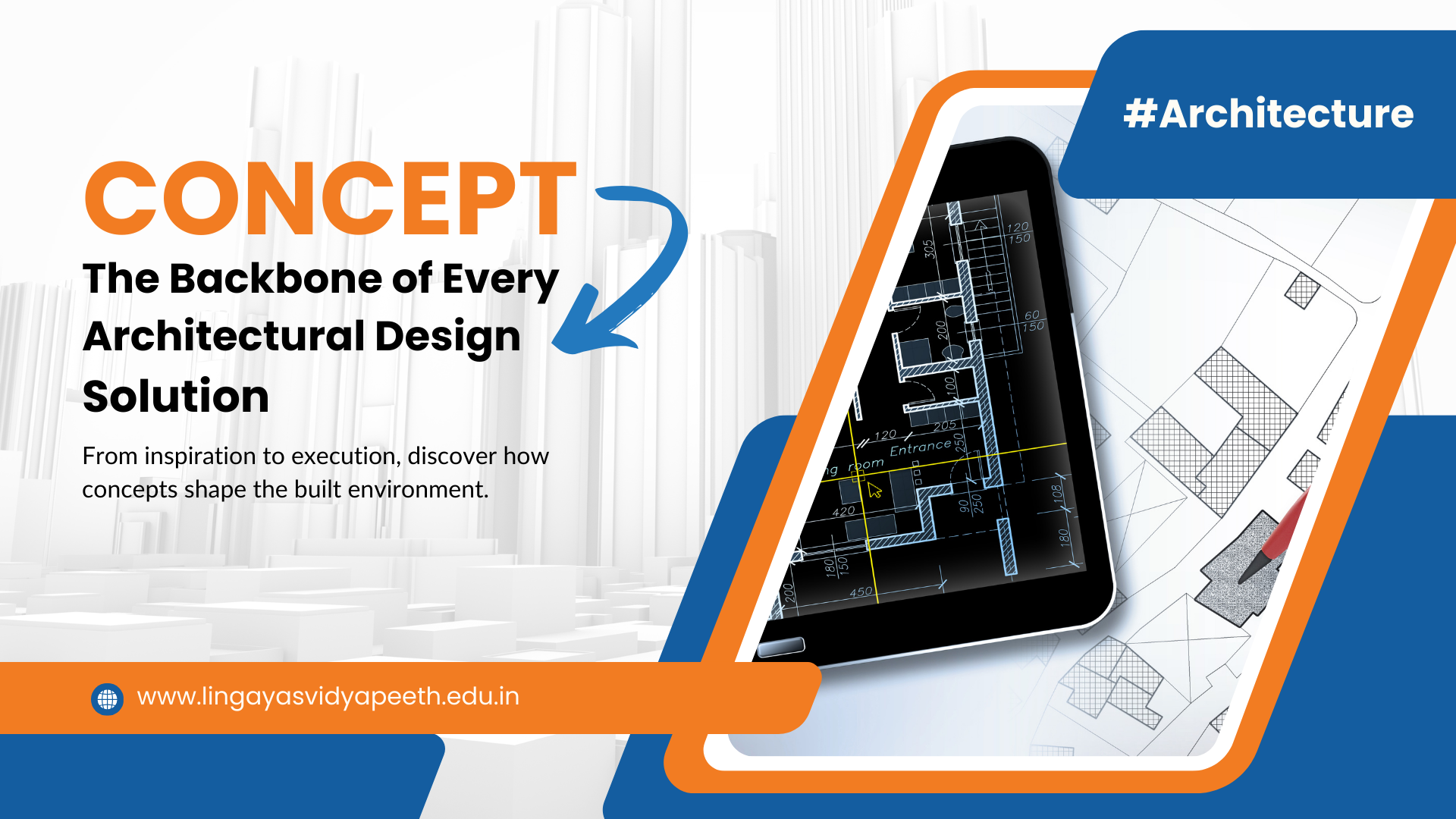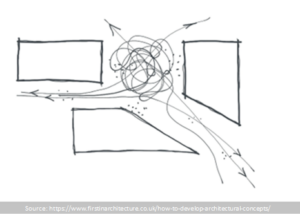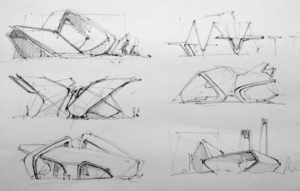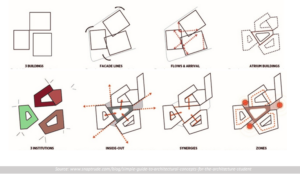Home » CONCEPT: The Backbone of Every Architectural Design Solution

Determining what constitutes a good and a bad architectural design concept is one of the largest obstacles faced many architecture students. We frequently develop design solutions but are unable to articulate the underlying concept.
When faced with a design challenge, architects are never at a loss for ideas to solve it in a way that works. In design studios, many brainstorming sessions are undertaken to generate original design solutions. Understanding what constitutes a good notion can be challenging in the early phases of your research. It can be difficult to ask for explanations when you progress through your studies and still don’t grasp something.

What a concept is, is a vague notion of what or how something functions. An abstract is not a literal reality; rather, it is a statement of a basic notion or core of something. Stated otherwise, a concept is an ethereal or abstract idea. We are unable to grasp or see it. It embodies something fundamental.
3D Modelling Has Impacted the Architecture
What an architect experiences and considers when they interact with their design is referred to as a design idea. It is all about how the user or visitor feels, thinks and experiences the completed structure and its spaces as they move through it. A concept is not created by a single thing. It isn’t the contents, how the rooms are organized, the people, the activities, or the location. It is the culmination of all elements of the project coming together in specific ways to generate something new and distinctive.
We collect data regarding the site, typology, brief, users, and program at the beginning of the project. These turn into the fundamental project characteristics, requirements and context that we operate inside. In order to produce an architectural structure, places and experience that respect the project parameters, we use formal design components and principles, materials and technology, as well as teamwork, throughout the design process.

Source: https://in.pinterest.com/pin/694469205035905933/
All of these things are not concepts. The site, typology, brief, users, program, materials, technology, formal design elements and principles and collaboration are not components of a concept. These entities are used by and respond to concepts; they are not concepts themselves. These serve as our instruments or fundamental components of design that help us articulate and produce the architectural design idea.
Play of Light and Shadow in Architecture
A concept is the essence of the project. It is the thread that connects everything. It is the feeling, experience, traits, and features that people recognize right away when they go into a building or area. A concept serves as a foundation and set of rules for the design process as well as the experience of the completed structure and its interior areas.
A well-defined concept enables the designer to evaluate each choice and choose a course of action that advances and complements the concept. Its takes into account and conveys every aspect at every scale, in every drawing, choice of material and line on a page. Nothing is universal. Upon closer inspection, the evolving design mirrors the overall concept’s physical attributes and characteristics, as well as its overall experience. The completed structure and space express and develop the concept in every way that you encounter it.

It might be challenging to grasp concepts, especially in the beginning. Some pupils understand it immediately. Most will have difficulty, at least in the beginning, with their design tasks. You can come across an idea that everyone adores without knowing why.
Some ideas will be clear to understand right away. Others will take longer and be more difficult to explain. In any case, it’s vital to keep trying to comprehend and grasp the material. Your final design will be lot richer and your design process will be much clearer when you finally get it and learn how to create a brilliant concept.
From
Ar. Aditi Arora
HOD in School of Architecture and Planning
Lingaya’s Vidyapeeth
Top Architecture College in Faridabad, Delhi NCR
RECENT POSTS
CATEGORIES
TAGS
Agriculture Agriculture future AI Architecture artificial intelligence Bachelor of Commerce BA English BA Psychology BTech AIML BTech CSE BTech cybersecurity BTech Engineering Business management career Career-Specific Education career guide career option career scope Civil engineering commerce and management Computer Science Computer science engineering Data science degree education Engineering Engineering students English Literature english program Fashion Design Fashion design course Higher Education Journalism journalism and mass communication law Law career Machine Learning mathematics MBA MBA specialization Mechanical Engineering Pharmacy Psychology Research and Development students
Nachauli, Jasana Road, Faridabad, Haryana
Address: C-72, Second Floor, Shivalik, Near Malviya Nagar,
Above HDFC Bank, New Delhi 110017
Landline No. - 011-46570515 / 45138169 / 41755703
Mobile No. - +91-7303152412 / +91-7303152420 / +91-9311321952
Toll Free: 1800-120-4613
Mobile : 8447744303 | 8447744304 | 8447744306 | 8447744309
8700003974 | 8700003411 | 8700003749
Copyrights © 1998 - 2025 Lingaya's Vidyapeeth (Deemed To Be University). All rights reserved.
LV only conducts physical/online verification of any document related to examination on the following email id:
It is important to note that the following email IDs and domains are fraudulent and do not belong to our university.